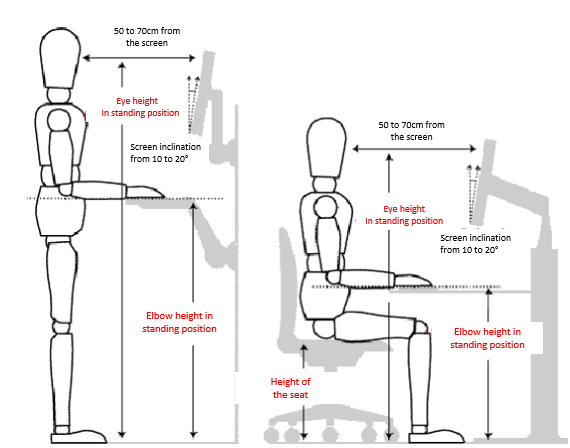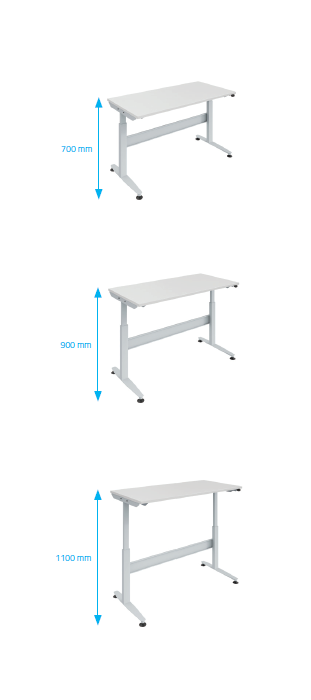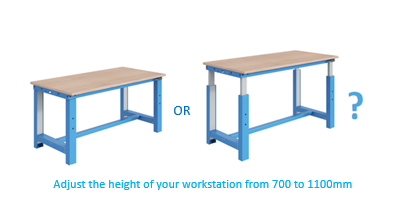Today, the ergonomic quality of workstations is a major issue in industrial and logistical enterprises. It ensures the well-being, health and safety of a company’s employees. It also promotes productivity by providing efficient working positions and reducing absenteeism.
Every one of the elements making up a workstation and its environment can exert a positive or negative influence on its ergonomics. A well-conducted study and the appropriate choices can significantly improve its ergonomic quality.


The main factors of ergonomic influence are:
- adjustment of the height of the work surface. This gives the operator an optimum working position in accordance with his or her morphology and with the dimensions and weight of the products with which he or she is working.
- the quality of the work surface itself. The finish of this surface can be adapted to the constraints of the profession, such as impacts, draining of static electricity, heat, resistance to cutting tools, reflection of light, etc. Finishing edges with more or less bull-nosed chamfers and edge bands made of appropriate materials and suitably shaped ensure a certain level of safety for users.
- The angle, power and colour of projected light, among other factors, are decisive in the visibility of detail to a level that varies from one profession to another.
- the absence of protruding screws and bolts or sharp edges on the structure. This enables freedom of movement without risks.
- proximity of tools and components within easy reach. A 3rd level superstructure can accommodate these elements as well as data-processing tools within arm’s length and at an optimum distance from the eyes.
- the position of the body in the working space. The body should be in regular or even continuous movement rather than in an immobile posture which, contrary to generally accepted belief, induces aches and pains. The seat is an essential element in this quest. If the working position is seated, the seat must exert continual pressure on the back, keep the spinal column in a vertical position and the rump in contact with the seat back without impeding the circulation of the blood behind the knees, keep the feet flat on the floor, keep the angle of the arms horizontal on the working surface and permit continual movement of the spinal column to maintain the flexibility of the vertebral discs.
Good ergonomic practice is a source of well-being at work for the employees. This situation makes them more efficient in their everyday work and consequently generates an immediate improvement in productivity at no extra effort on the part of the employee.
Taking such ergonomic considerations into account is also a factor in reducing rates of musculoskeletal disorders, or MSD. Among its beneficial effects are reduced absenteeism rates and hence, greater productivity in the long term as well as fewer and less serious cases of occupational diseases.







